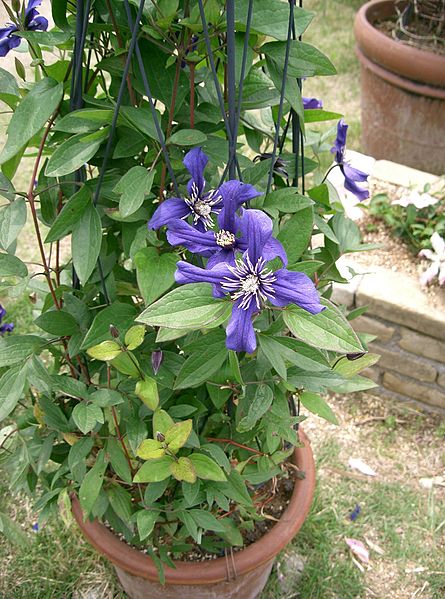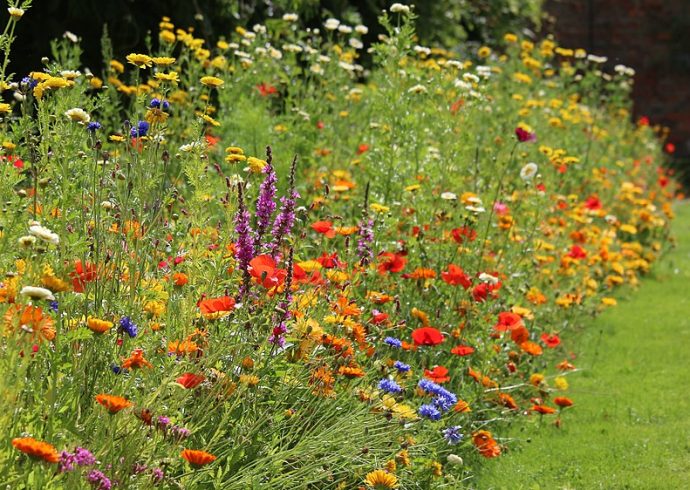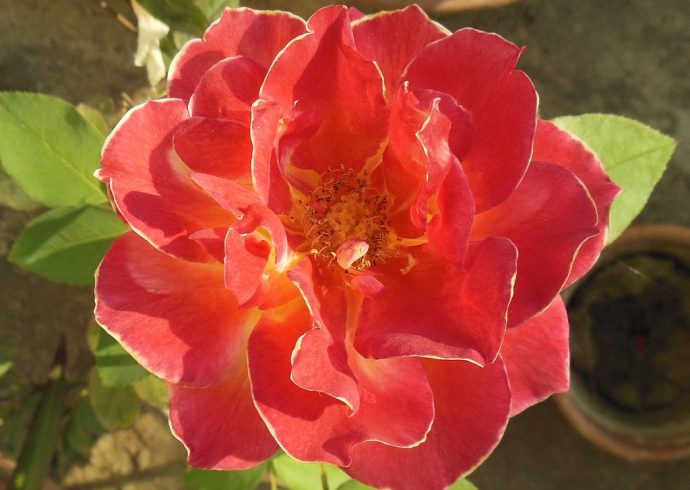
Growing a Climbing Garden
Morning glories and climbing roses are no longer the only flowers that immediately come to mind when we think of plants that like to climb on something, usually a trellis, fence, or wall. A climbing garden can be quite easy to build and maintain even in a small area near your house in the front or back yard.
Decide if you prefer to have the trellises free standing or leaning up against you house. The climbing garden can also be square in shape with just part of the trellises leaning against the house, and the other one free standing. Free standing trellises need to be in the ground at least one foot deep so it can withstand the weight of the flowers. Heavier plants such as climbing roses, do much better when the trellis is leaning up against a side of the house. Choose the trellis that’s right for you – it can be made of wood, heavy duty plastic, or metal. Once you decide where to set up the trellises, you are on your way to getting ready to choose which flowers to plant in your climbing garden.
After the soil has been prepared, turned over well to allow for drainage, and added a mulch, if necessary, mark out on each side of the trellis how many flowers will be planted there. One plant per 12″ to 14″ will give enough room for the flower to spread and grow up the trellis. Several trellises can be used in the garden and even installed at angles to make the garden appear less box-like in shape.
Now you are ready to plant the climbing flowers. Some suggestions appear below:
Morning glories are a favorite annual with many gardeners and they can be planted from seed in a sunny area. This flower comes in pink, red, purple, and of course blue. The seeds can be planted directly in the soil after the last frost, and watered. If you want to be able to plant the small germinated seeds outside when it gets warmer outside, you can start the seeds indoors in a small planter. Morning glories bloom in the morning so plant them facing east so they can be exposed to the sunlight during that time of day. Use a fertilizer once the plant reaches maturity and allow the flowers to make their way up the trellis.
A trumpet vine is another beautiful flower that loves to climb up a trellis. The Madam Galen variety is dark orange in color, grows from twenty to thirty feet high and spreads out so allow about six feet between this plant and your other climbing plants. Ideally, the trumpet vine should have its own trellis to climb up. The trumpet vine grows quickly once it hits the mid-summer season and blossoms throughout the fall. Hummingbirds are attracted to this plant for its sweet flowers.
Clematis is another beautiful climbing flower that grows on thick vines and will thus require good solid support from the trellis. There are several varieties of clematis to choose from, such as jackmanii, niobe, and henryi. On average, the clematis grows from eight feet to twelve feet in height. Allow at least two feet for spacing for one clematis plant. This flower blossoms throughout the summer and produces bright blossoms in pink, white, and purple.
The climbing shell plant produces beautiful shell-like flowers in muted shades of pink and mauve. This plant likes the full sun and will grow up to 25′ in height. Space from five to six feet apart when you plant this beautiful flower. Before planting, add some garden humus to enrich the soil for this plant.
The akebia quinata is pale pink to amethyst in color and have sausage shaped fruit in the summertime. This plant will attract butterflies to your garden. Akebia quinata grows from twenty-five to thirty feet in height and should be spaced six feet apart.
In addition to the flowers above, you can also add berry blossoming vines like the bittersweet. Both the male and female varieties should be planted to produce the fruit. The bittersweet grows from twenty to thirty feet high and should be spaced three feet apart.
No climbing garden is complete without at least one type of rose bush, and here there are many varieties to choose from. Some of my favorites are: Charles XII, Mme. Isaac Periere, and Blairii #1, which are all Bourbon roses. Tea roses and hybrid setigera roses will also love your trellises, too. At some point for each plant, they will need pruning to prevent overgrowth. Remove the growth that tends to hang into the plant next to it so they do not become intertwined with each other. Use an all-purpose garden fertilizer for the plants, and a rose fertilizer for your climbing roses. The space on the ground in your trellis garden can either be left plain with grass, or you can add marble or cedar chips to enhance your garden. Add a garden chair or bench to your trellis garden so you can enjoy the little “room” you created with the climbing plants and you can not only enjoy the flowers but have the added privacy, too.
Image Credit: KENPEI, CC BY-SA 3.0, via Wikimedia Commons.


